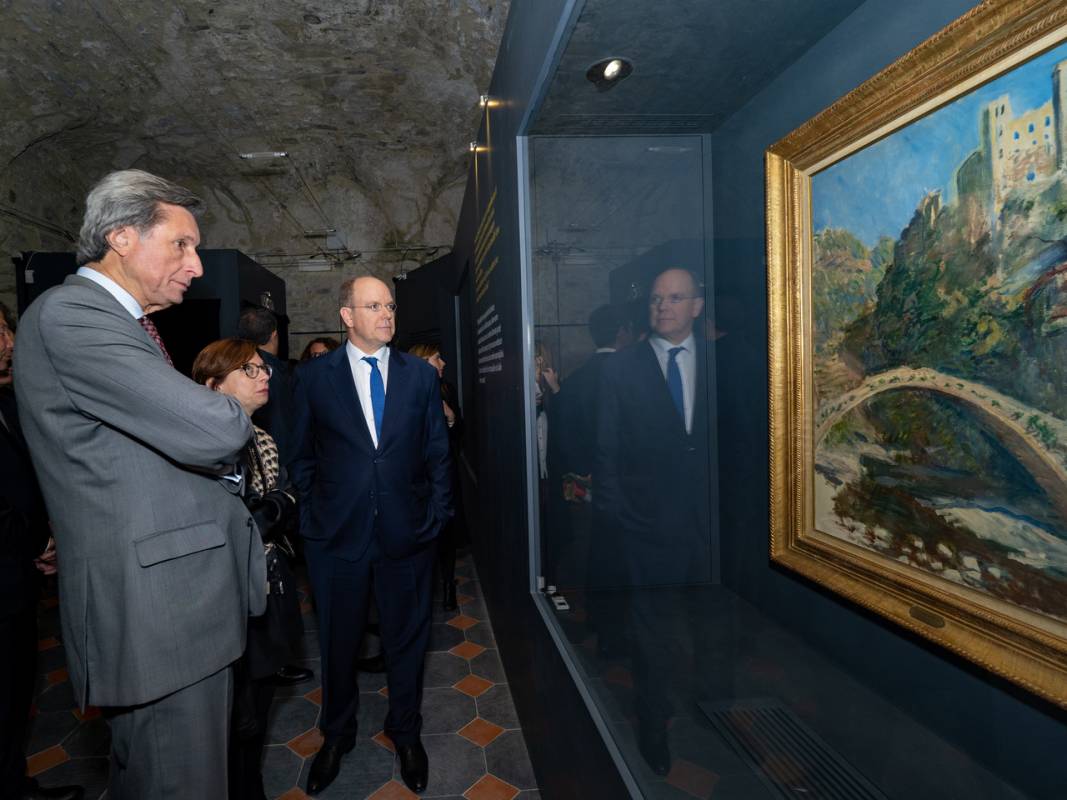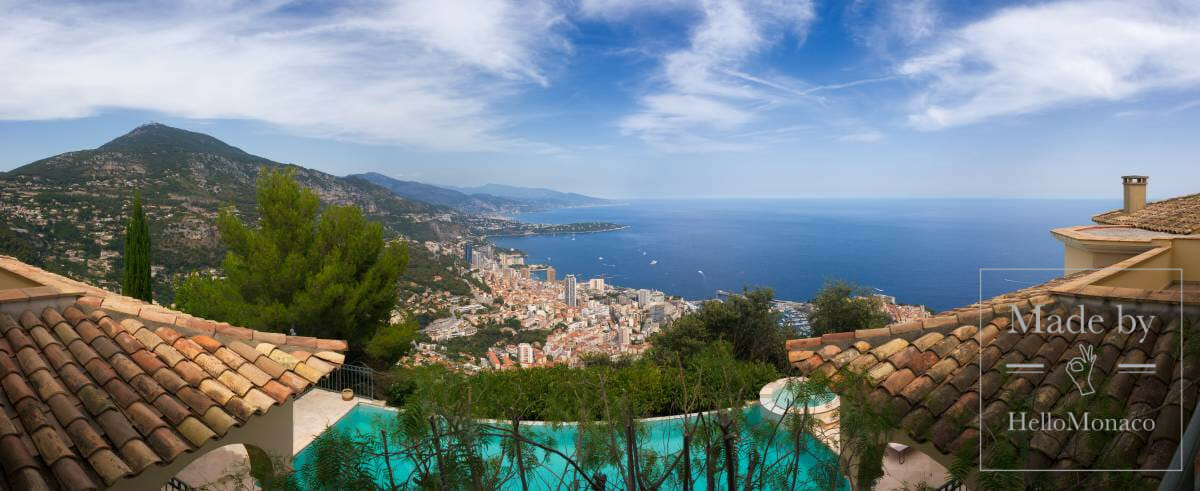Despite a long and common history, at times the two have been poles apart. One is inseparable from the history of Dolceacqua the now small Imperia town on the Italian/French border, which was once more closely linked to its ruling family in the powerful city of Genoa. The other is the dynasty ruling the now cosmopolitan and international Principality of Monaco. Over the centuries the relations between their ruling dynasties have been challenging, to say the least, no matter their different destinies. Even the union of the Lord of Monaco, Jean IIs sister, Francesca Grimaldi with the Lord of Dolceacqua, Luc Doria would not calm down the centuries-old feuds that still fueled back and forth after their death.

In 2020, Monaco Mayor Georges Marsan and Mayor of Dolceacqua Fulvio Gazzola signed a letter of intent to make Monaco and the commune of Dolceacqua twin cities. Approved by the Principality’s Minister of State, it was then approved by the respective city councils. A celebration is scheduled for 3rd November 2023. The date is symbolic. November 3rd is the same day as the swearing-in of the trustees of Dolceacqua, Apricale, Isolabona and Perinaldo in Monaco in 1523. The ceremony was held in the Orange Garden of the Grimaldi Palace with Augustin Grimaldi, Bishop of Grasse and the Lord of Monaco in attendance.

In 2015, Prince Albert II made his second official visit to Dolceacqua, and in 2019 His Serene Highness honoured with his presence the exhibition of Claude Monet in the Doria castle. This small Italian town will always be linked to the Grimaldi family history, like Verona for the Montagues and Capulets. Except that this is a story of love and hate between the Grimaldi and the Doria families.

It all started back in 1200…
“…where civil blood makes civil hands unclean…”
In 1200, Doria, one of the wealthy and powerful families of the Republic of Genoa, bought the land of Dolceacqua, which significantly accelerated the development of the town. A few decades after, Italy will be divided by the conflict between the Guelphs and Ghibellines, two political groups that were enemies until the XVI century.
The Guelphs intended to strengthen the power of the Pope in the country; their rivals supported the Holy Roman Emperor. How does this relate to our history?
The division of the population into two warring camps affected the relations of these two influential families from Genoa, Doria and Grimaldi, who had become rivals for several centuries. In the 14th century, the Grimaldi family already ruled the Principality of Monaco and supported the Ghibellines, while the Dorias belonged to Guelphs camp.

“And all my fortunes at thy foot I’ll lay
And follow thee my lord throughout the world”
The war between families lasted until 1491, when love became stronger than hate. This year was marked by the wedding of Francesca Grimaldi, sister of the Lord of Monaco Jean II, and Luc Doria, the Lord of Dolceacqua. This marriage was supposed to put an end to years of rivalry between the two families.
For some time, the tensions between the Grimaldis and the Dorias abated. In 1513, Francesca decided to strengthen the connection between the families, ordering the polyptych of Saint Devote, the patron Saint of Monaco, from the artist Ludovico Bréa. Four years later, the masterpiece was installed in the Dolceacqua Cathedral.
The calm before the storm lasted until 1523.

“Rebellious subjects, enemies to peace,
Profaners of this neighbour-stained steel”
The marriage of Francesca and Luc only temporarily delayed the struggle between the families. After the death of Francesca and her spouse, their son Bartholomew broke the truce. A person who by birth had a chance to further the peace between the families and to stop mutual hatred, not only fanned the flames further but also became a murderer, thereby bringing his own death closer…
On August 22, 1523, the 31-year-old Bartholomew Doria arrives at the Princes Palace in Monaco to see his uncle Lucien, who at that time ruled the Principality.

It is worth saying a few words about Lucien, who came to power in 1505, killing his brother Jean II (accidentally, according to his own words). Lucien Grimaldi was a fearless and visionary ruler who had many times defended his state: first, during the siege of the fortress by the army from Genoa, and then, when Louis XII tried to annex the Principality to France. Lucien’s rule proved very successful and marked the enhancement of Monaco’s international authority. In 1512 the French King Louis XII confirmed the independence of Monaco.
By the time of his meeting with his uncle, Bartholomew was already opposed to Lucien, who wasn’t in a hurry to transfer the inheritance, left from Francesca, to his nephew.
This visit was planned in advance, as Bartholomew, blinded by greed and hate, wanted only one thing, to kill his uncle. Having sent his men to Monaco in advance, Bartholomew arrived at the palace of his uncle, where he got rid of him.


“Mercy but murders, pardoning those that kill”
The people of Monaco did not appreciate Bartholomew’s insidious plan. Having raised the alarm, they went to the palace, where the nephew of the murdered Lord of Monaco was hiding. Bartholomew Doria managed to leave the Principality. According to the succession rules, it was Lucien’s 9-month-old son who inherited the Monaco throne. Lucien’s brother, Bishop Augustin, served as Regent. Nevertheless, this story attracted the attention of the Kings of Spain and France, who took radical measures, sentencing Bartholomew to death. Bishop Augustin who swore to avenge his brother’s death used all his influence to force this decision.

Bartholomew Doria died on July 13, 1525. According to one of the versions of historians, the son of Francesca Grimaldi and Luc Doria was escorted to Monaco, where he was hanged. According to others, he was thrown from the wall of his own castle. In 1524 before his death Bartholomew ceded his rights for possession of Dolceacqua to Charles III of Savoy; the land became part of the county of Nice until 1860.
In memory of the extinct Doria family, in addition to the 11th century castle in Dolceacqua, there are two beautiful places in Rome — Galeria Doria Pamphilj on via del Corso, where one can see the works of Titian, Veronese, Bellini, Brueghel and Raphael, and the Villa Doria Pamphili in the Trastevere district, now owned by the state.









